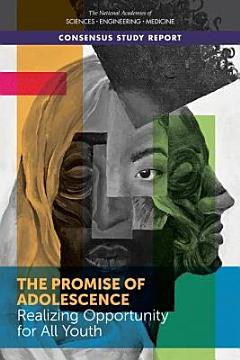Adolescenceâ€"beginning with the onset of puberty and ending in the mid-20sâ€"is a critical period of development during which key areas of the brain mature and develop. These changes in brain structure, function, and connectivity mark adolescence as a period of opportunity to discover new vistas, to form relationships with peers and adults, and to explore one's developing identity. It is also a period of resilience that can ameliorate childhood setbacks and set the stage for a thriving trajectory over the life course.
Because adolescents comprise nearly one-fourth of the entire U.S. population, the nation needs policies and practices that will better leverage these developmental opportunities to harness the promise of adolescenceâ€"rather than focusing myopically on containing its risks. This report examines the neurobiological and socio-behavioral science of adolescent development and outlines how this knowledge can be applied, both to promote adolescent well-being, resilience, and development, and to rectify structural barriers and inequalities in opportunity, enabling all adolescents to flourish.

